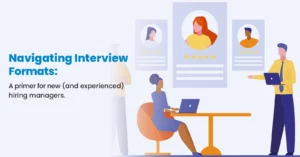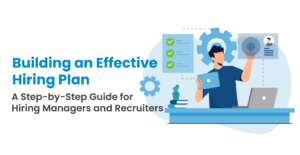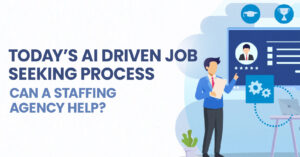Onboarding full-time hires is a clearly defined process for most organizations. But the same can’t always be said when onboarding contractors.
The contingent workforce grew substantially amid the pandemic, and it remains strong. In fact, many North American companies are increasing or plan to increase their use of contractors in the near future.
While it’s just as essential to engage contingent workers in your organization as it is your full-time employees, contractors require different onboarding considerations than full-time hires. Following are some recommendations to help improve contractor onboarding and enhance your contingent workers’ bond with your brand.
Assess your contingent worker hiring and contractor onboarding strategy
What is your recruiting process for contractors? Are you handling hiring internally or partnering with a recruiting agency that specializes in contingent workforce management?
To best assess your strategy, imagine what the job role and hiring process looks like to a job seeker who’s thinking about joining your organization as a contractor. Is the position in-office, remote or hybrid? If the job is off-site, how will you keep the contractor connected? Who will the contractor report to? How will the payroll process work? Will the contractor need any training to perform the job? Will onboarding be virtual or in-person?
Answering these questions as part of evaluating your contingent workforce practices will identify challenges and opportunities within your hiring and onboarding approaches. If you already engage contingent workers, consider surveying through voluntary and anonymous polls about their experiences.
Humanize remote recruiting and onboarding
The contingent workforce is here to stay, and so are video interviews, virtual onboarding and remote or hybrid work models. With so much — and in some cases all — of the hiring process conducted electronically, it’s crucial to find ways to humanize the process; this is especially true for contractors who may also work remotely and have limited contact with other employees.
Get to know the candidate as a person through the recruiting process. In addition to questions designed to gauge prospects’ skills, experience and work ethic, ask about job seekers’ hobbies, interests and life/work preferences.
When a contractor is hired, provide a tailored experience leading up to the job’s commencement. Schedule video meetings to link the contractor with other management, team members or fellow contingent workers; consider an informal in-person or virtual gathering depending on the contractor’s proximity.
Ensure someone from the onboarding team reaches out to the contractor during the first week. Ask for feedback about onboarding and any challenges the contractor faces in performing their work; resolve any issues immediately.
Clearly communicate expectations
During hiring and onboarding, be intentional about communicating the scope of work and expectations thoroughly and clearly.
Accurately describe what is required of contingent workers to be successful in their roles, and discuss mutual expectations. Talk with contractors about what will be expected from them and what they require from the organization to perform their jobs effectively.
Let contractors know what their first day and week will look like, who to turn to with questions, and other essential details. And don’t just put the details into a form or email; making communication a personal, interactive reality leaves no illusion that it has taken place. It instills a positive impression on contingent workers that they’re valued team members even if they are temporary and/or remote.
Bond contractors with your brand
Contingent workers will likely have contact with several people within an organization. Each touchpoint is a chance to provide a positive experience, forge loyalty and grow your brand.
On the other hand, contractors who have negative interactions with other team members or who feel left on an island may likewise review the company poorly on Google and job-networking or company-insights resources like Glassdoor. As job seekers often scour such websites when researching an organization, it’s crucial that your talent — even temporary — feels appreciated and involved.
The benefits of engaging contingent workers in your brand extend beyond your contractors’ happiness. Doing so can amplify your organization’s culture, build a lasting relationship in the event a long-term position becomes available, and draw other talent to your company.
Ask for feedback
One of the best ways to improve contractor onboarding and prepare for future contingent workers is to generate feedback from current contractors.
If you don’t already have an exit interview or anonymous and voluntary survey for contractors at the end of their tenure, develop a questionnaire that appraises what contractors think about workflow, management, communication, your brand and other applicable details. If you employ contingent workers for extended timeframes, periodically survey them about the same issues.
This feedback — yes, even the negative comments — can inform positive changes within current and future processes. Offering contractors the ability to provide feedback also demonstrates that an organization values their experience and skillsets and views them as vital team members.
Onboarding as the platform for contractor success
One of the benefits of working with contractors is speed. Contingent workers can often jump into a particular project or role with little to no guidance.
Sometimes lost in this haste to fill critical positions is an onboarding procedure that truly sets contractors up for success. Make onboarding a personal experience that gives contingent workers the information necessary to meet expectations and imparts your organization’s values and culture.
Though some contractors may find long-term homes or partnerships with your organization, most will likely move on. But the effects of a favorable onboarding process will resonate within your organization and beyond.
The Voice of Talent: Return to the Office Report
Procom recently surveyed over 1,000 knowledge workers to discover talent priorities and how employers can engage and retain talent right now.
The Voice of Talent Report offers actionable insights into what workers expect from employers in the New World of Work.
Access your complimentary copy to discover how to attract talent right now:




